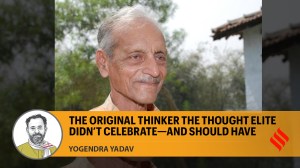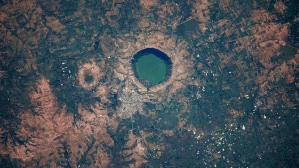"Small wonder" to steam roll into Guinness family
PUNE, Jan 3: Ever since the first practical internal combustion engine (ICE) was tested in United Kingdom sometime in May 1826, the ICEs ...

PUNE, Jan 3: Ever since the first practical internal combustion engine (ICE) was tested in United Kingdom sometime in May 1826, the ICEs have undergone tremendous changes in their capacities and dimensions. And keeping with this spirit, a smallest, 0.6 cc capacity, ICE has been developed by Raghunath Karande of Nigdi.
Karande’s miniature wonder which can run with 7500 rotations per minute (RPM) is all set to move into the Guinness Book of World Records. Its researcher Simon Gold in a letter to Karande has asked for details of the engine for a possible inclusion in the next edition of the book.
A draftsman by profession now working with the two-wheeler giant Bajaj Auto, Karande has toiled for about a year and half and invested nearly Rs 65,000 for his dream machine weighing just 68 grams.
“I felt gratified when I actually ran 28 plastic wheels using my engine, a few months ago. They all revolved for about 40 seconds,” the inventor told The Indian Express.
The smallest available ICEs used by toy manufacturers are of 0.75 cc capacities. “I tried with a 0.2 cc capacity engine. I did build it, but it never run. So I went on adding on to the engine capacity and finally a 0.6 cc thing proved to be a working ICE. So I can rightly claim that nothing smaller could work than my engine,” Karande averred.
Hailing from Patwardhan Kuroli village in semi-parched Pandharpur taluka of western Maharashtra, Karande calls himself a fascination for machines impersonated. Even as a small child, he was always attracted by anything that used to roll and move, especially the steam railway locomotives.
During one of his annual pilgrimages to the temple-town of Pandharpur with his grand-mother, Karande was exposed to a miniature version of a steam locomotive. The model played a catalyst for young Raghnath who was inspired to make a similar loco-model using tins, clay and a kerosene lamp, easily available to him. “It was then a worker at the loco-shed told me how a engine works. It was my first exposure to the science behind something. He also taught me to use vernier calliper,” Karande recalled.
Domestic inabilities forced him to forsake his urge for higher education, despite passing his matriculation examination with a distinction. Karande joined the Kolhapur industrial training institute and became a draftsman.
Obsessed by his smallest wonder for over past two years, Karande went on experimenting with various prototypes of ICEs.
Interestingly, even in the industrial belt like Pimpri-Chinchwad it was difficult to get the accuracy and precision with the machinery available. “I had to resort to trial and error while developing various parts of my engine,” he said. Many aspects right from the material used to a right mixture of fuel with right octane content had to be considered, he said. The seven millilitre fuel tank’ of his ICE requires a mixture of ether, castor oil and kerosene and once filled it runs for about 40 seconds.
Karande’s ICE was tested by various institutions including the Automotive Research Association of India officials and other senior officials at the R&D wings of different industries before it was sent to the publishers of the Guinness. The research wing of the Guinness Publishing approved the little wonder a few months back and accepted for inclusion in the 1998 edition of the record book.
Karande, however, is still undecided on patenting his invention. “I have made a few engines like that,” he said adding that he would rather go for something else than think of any commercial aspect of his invention for time being.



- 01
- 02
- 03
- 04
- 05




























